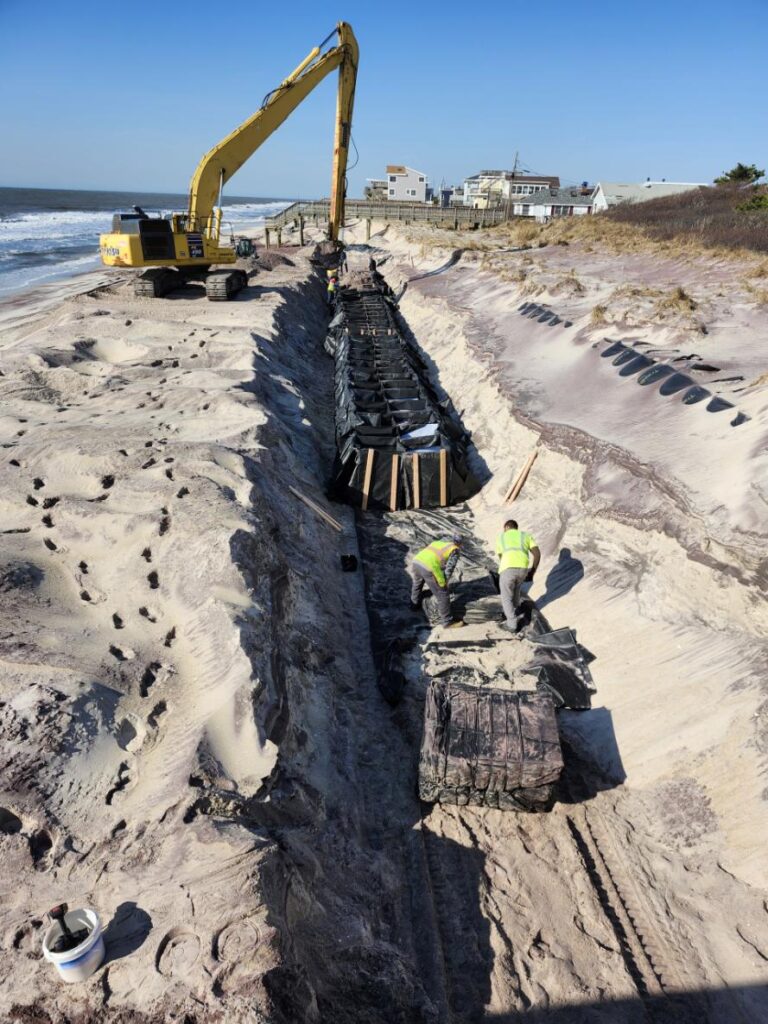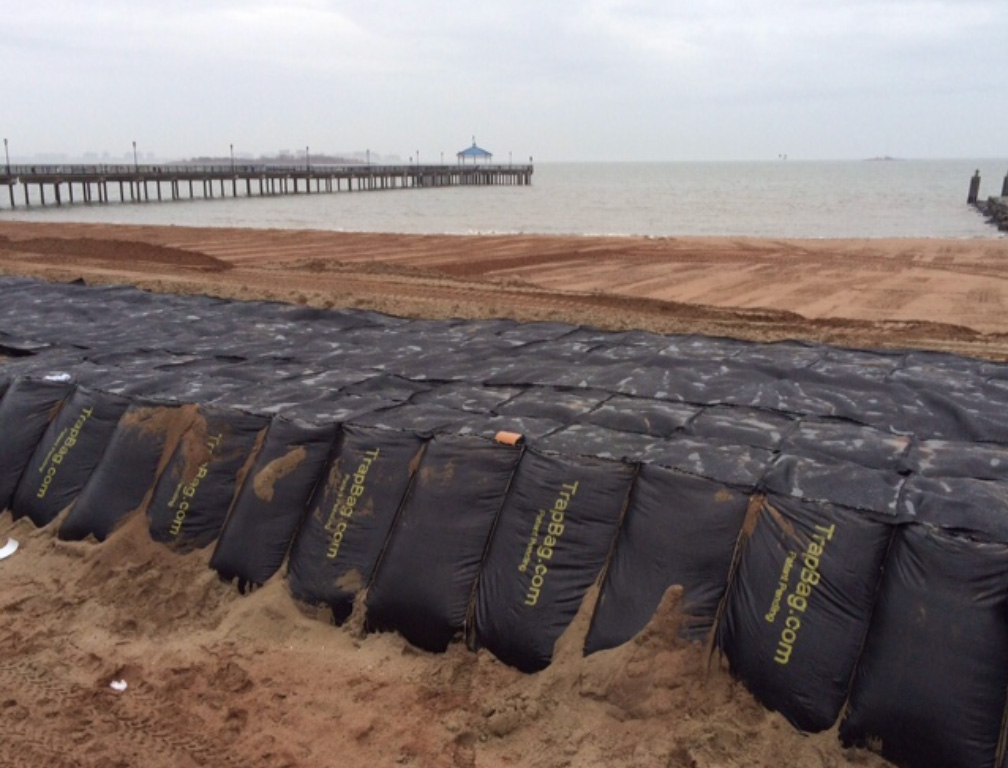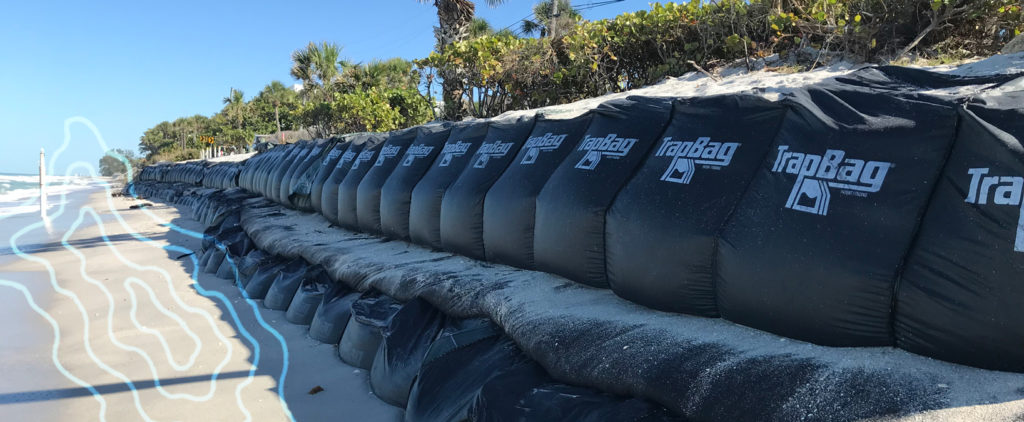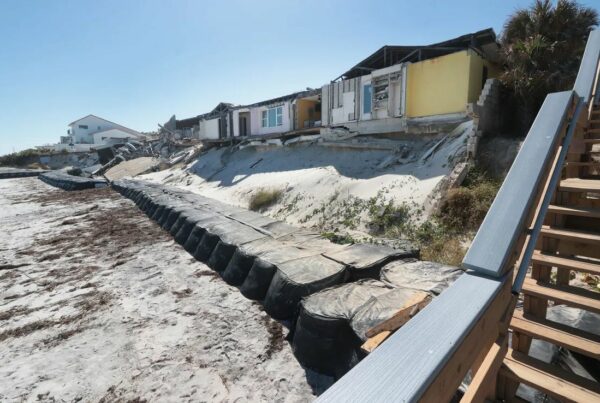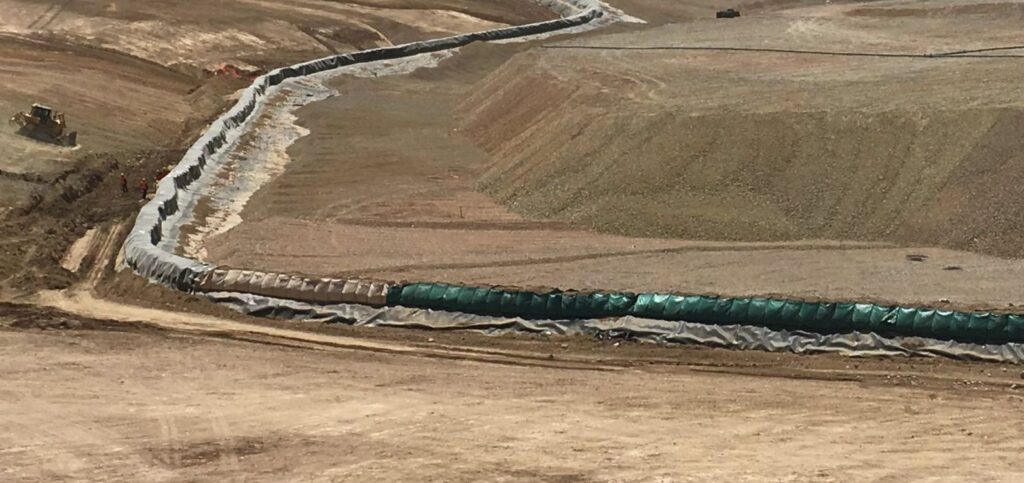How TrapBags are Used in Construction
TrapBag barriers have been used on construction sites of all kinds across the globe. Here are some of the ways project managers and structural engineers have used them to help their projects be safer and smoother.
Flood Prevention
Construction site flooding during storms or flash flood events can wipe away the work your crews have been doing for months in a matter of minutes. That’s why project managers all over the world have been using TrapBag flood prevention barriers to protect their job sites from damage in vulnerable areas.
Learn More »Cofferdams
While cofferdams are traditionally extremely expensive and challenging to build, TrapBag offers a custom, easy solution with our new cofferdam products. These rectangular bags feature Coroplast interior paneling to prevent bulging and a design that allows them to be pre-filled and placed flush against adjacent bags.
Some of the ways we’ve seen construction projects use cofferdams include:
- Bridge construction and repair
- Pier construction
- Detention ponds
- Underwater construction sites in rivers or harbors
- Beach restoration projects
- And more
Infrastructure Protection
Highways, bridges, and piers can become vulnerable to damage and destruction during storms, hurricanes, and other major flooding events. TrapBag barriers make ideal reinforcements for protecting these structures from wave action during major weather events, or when your project entails diverting water to other areas.
Learn More »Retaining Walls
In addition to holding back water, TrapBag also makes an ideal retaining wall for preventing soil erosion. This makes it easier for your crews to reinforce the foundations on your project site and ensure the structural integrity of any temporary or permanent buildings.
Learn More »Stormwater Containment
Stormwater containment is a required environmental protection measure for many construction projects, both municipal and commercial. Without proper containment measures, water that has been contaminated with chemicals and other harmful runoff can enter the water supply, harming aquatic wildlife and nearby residents.
Fortunately, TrapBag is just as good at keeping water inside a confined space as it is at keeping it away from vulnerable areas. Many project managers have chosen TrapBag as their method of choice for creating stormwater detention ponds that keep this contaminated water from leaving the construction site until it can be properly treated.
Learn More »Spill Control
Nobody wants to think about the disasters that can happen if there’s a chemical or petroleum spill on or near your job site. However, it’s important to have measures in place to protect the environment if they happen.
Similar to its stormwater containment capabilities, TrapBag makes an ideal barrier for enclosing and cutting off leaking chemicals, oil, or petroleum from aquatic or dry environments. The watertight seal it creates prevents these harmful chemicals from leaking out using the same principle as sandbag barriers, but with a reinforced design.
Learn More »Flood Bags for Construction Sites
TrapBag is an ideal flood barrier system to use on construction sites to keep water out and protect your crews while they work. Here’s why so many job sites rely on TrapBag barriers to get the job done right:
-
Easier to fill/less labor: It takes dozens of people hours or even days to build a traditional sandbag barrier—slowing your project down even further. However, a team of two people with a skid steer or other heavy equipment can finish building a TrapBag barrier within a few hours.
-
Uses less material: Compared to a stacked sandbag wall of the same size, a TrapBag barrier uses 40% less fill material. A single 100-foot section of 4-foot TrapBags replaces roughly 8,000 sandbags.
-
More durable: Traditional sandbag barriers can collapse relatively easily, leading to catastrophic problems. However, TrapBag barriers can hold back thousands of gallons of water and stay standing strong through any project.
Why Choose TrapBags for Construction?
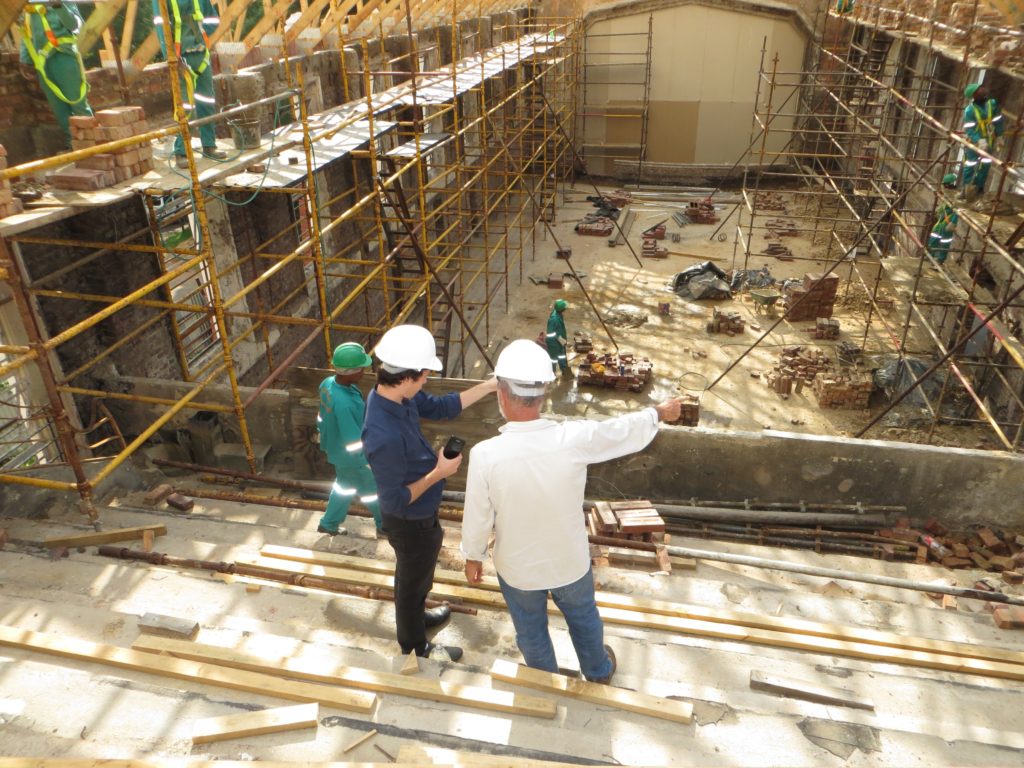
-

Versatility
TrapBag barriers are ideal for any project because of how versatile they are. Some of the ways we’ve seen construction companies use TrapBag include:
- Temporary cofferdams
- Stormwater management systems
- Flood barriers on the construction site
- Mudflow redirection systems
- Sand dune stabilization barriers
- And more
-

Speed
Compared to traditional steel or sandbag barriers, TrapBag is easier to assemble in a fraction of the time. For example, while steel cofferdams can set your project’s timeline back several weeks, TrapBag barriers can be set up in a matter of hours with durability and protection at the forefront.
-

Reliability
TrapBag doesn’t give way as easily as the typical sandbag barrier when you need it the most, providing a 3 to 1 safety factor (mass:hydraulic load). The U.S. Army Corps of Engineers has even tested it for its durability during catastrophic flooding scenarios, meaning it can withstand the water retention requirements for virtually any construction project.

